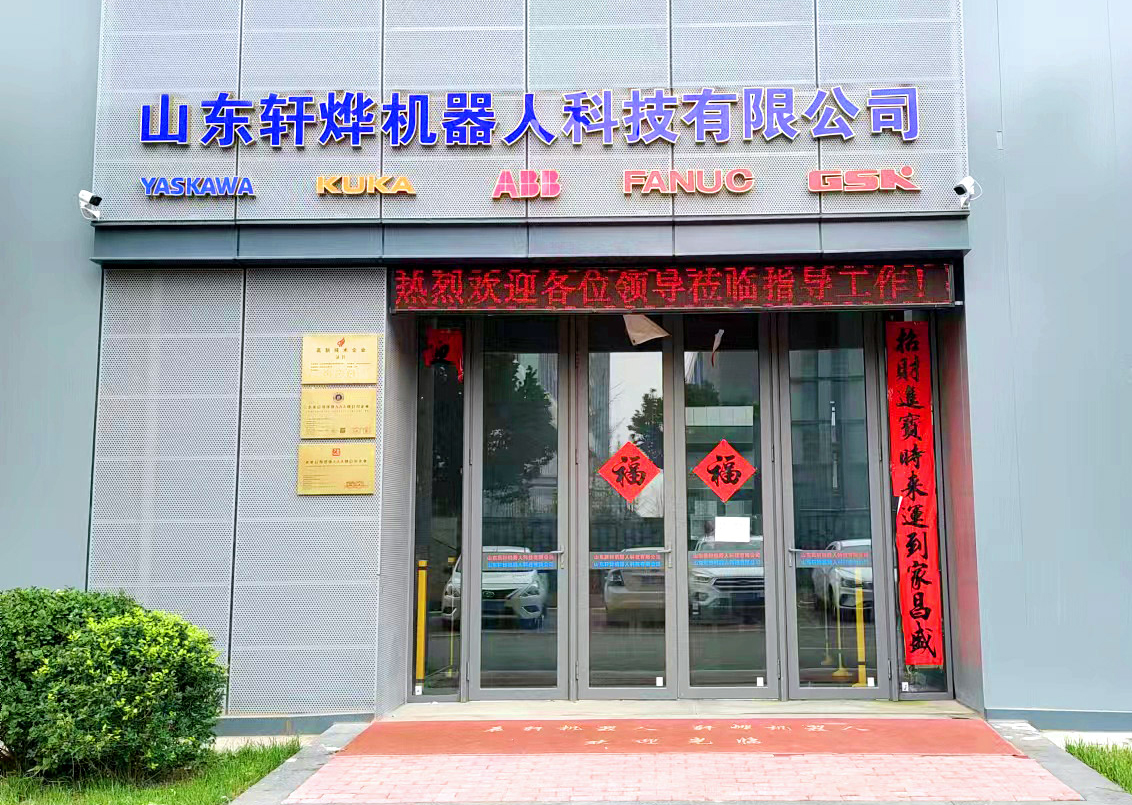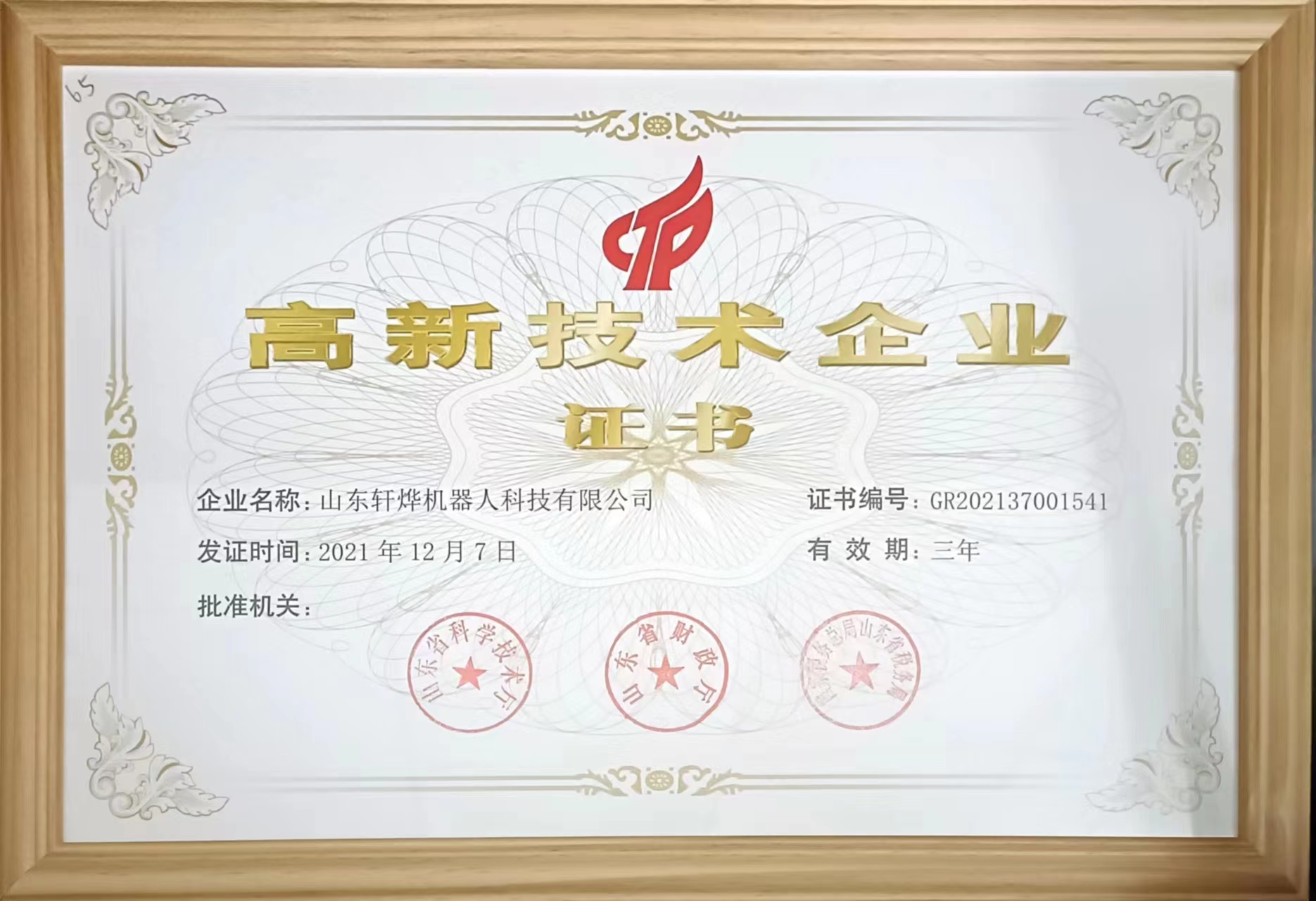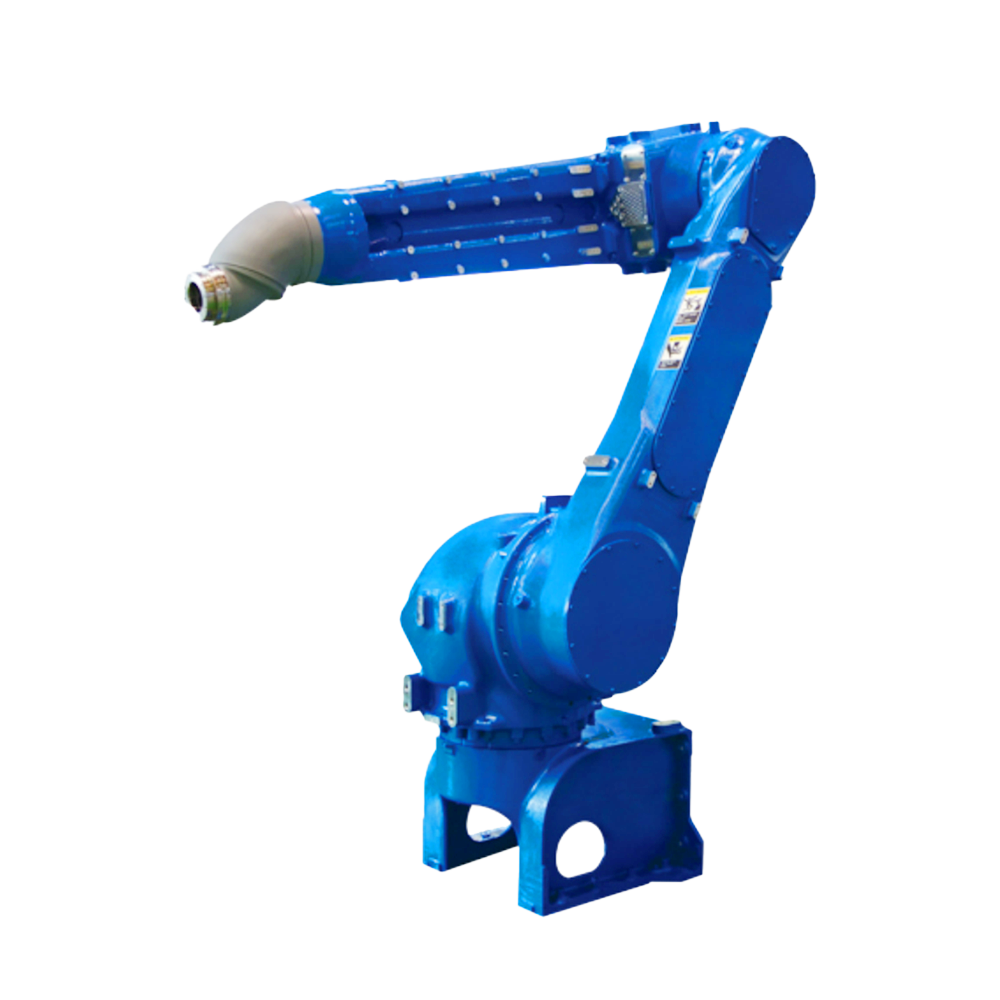
山东轩烨机器人科技有限公司是一家以工业机器人以及自动化非标设备于一体的技术企业,公司致力于焊接、切割、机器人机床上下料等领域的机器人智能化研究和产业化应用

公司立足于高端装备制造等战略新兴产业,将追逐“制造2025"致力于机器人技术和互联网技术的深度融合,推动智造。
发布:2024-01-05 浏览:0
焊接机器人激光器是一种利用受激辐射光放大原理产生的单色定向聚焦能量束。可以获得直径小于001毫米、功率密度高达10W/m2的能量束。焊接机器人激光焊接是利用可见光或紫外光作为热源,对工件进行熔化和连接的焊接方法。激光能量的实现不仅仅是因为激光本身具有非常高的能量,还因为激光能量高度聚焦在一个点上,这增加了它的能量密度。
Welding robot laser is a monochromatic directional focused energy beam generated using the principle of stimulated radiation amplification. Energy beams with a diameter less than 001 millimeters and a power density of up to 10W/m2 can be obtained. Welding robot laser welding is a welding method that uses visible or ultraviolet light as a heat source to melt and connect workpieces. The realization of laser energy is not only due to the high energy of the laser itself, but also because the laser energy is highly focused on a point, which increases its energy density.
在激光焊接中,激光照射被焊接材料的表面并与之相互作用。一部分被反射,一部分被吸收,进入物质。对于不透明材料,透射光被吸收,金属的线性吸收系数为107 ~ 108/m。
In laser welding, the laser irradiates the surface of the welded material and interacts with it. Part is reflected, part is absorbed, and enters the material. For opaque materials, the transmitted light is absorbed, and the linear absorption coefficient of the metal is between 107 and 108/m.
对于金属来说,激光在金属表面被吸收并转化为0.01 ~ 0.1m厚度范围内的热能,使金属表面温度升高后传递到金属内部。原始的激发能通过一定的过程转化为热能。激光除了像其他光源一样是电磁波外,还具有其他光源所不具备的一些特性,如高方向性、高亮度(光子强度)、高单色性和高相干性。
For metals, laser is absorbed on the surface of the metal and converted into thermal energy within a thickness range of 0.01~0.1m, causing the surface temperature of the metal to rise and then transfer to the interior of the metal. The original excitation energy is converted into thermal energy through a certain process. Laser, in addition to being an electromagnetic wave like other light sources, also has some characteristics that other light sources do not possess, such as high directionality, high brightness (photon intensity), high monochromaticity, and high coherence.
在激光焊接中,材料吸收的光能在很短的时间内(约10s)转化为热能。此时,热能被限制在材料的激光辐射区域,然后热量通过热传导从高温区域传递到低温区域。金属激光的吸收主要与激光波长、材料特征温度、表面状态和激光功率密度有关。

In laser welding, the light energy absorbed by the material is converted into thermal energy in a very short time (about 10 seconds). At this point, thermal energy is limited to the laser radiation area of the material, and then heat is transferred from the high-temperature area to the low-temperature area through thermal conduction. The absorption of metal lasers is mainly related to laser wavelength, material characteristic temperature, surface state, and laser power density.
一般来说,金属的吸收率随着温度和电阻率的增加而增加。目前,焊接领域主要使用两种激光器:YAG固态激光器(YTTRI-um YTTRI-um-al-石榴石,简称YAG)和CO2气体激光器。
Generally speaking, the absorption rate of metals increases with the increase of temperature and resistivity. At present, two types of lasers are mainly used in the welding field: YAG solid-state laser (YTTRI-um YTTRI-um al garnet, abbreviated as YAG) and CO2 gas laser.
蒸发的金属可以防止剩余能量被金属反射。
Evaporated metal can prevent residual energy from being reflected by the metal.
如果焊接金属具有良好的导热性,它将获得更大的穿透力。激光在材料表面的反射、透射和吸收本质上是光波与电磁场和材料相互作用的结果。当激光波入射到材料上时,材料中的带电粒子按照光波电矢量的速度振动,使光子的辐射能量变成电子的动能。物质吸收激光后,产生一些粒子的剩余能量,如自由电子的动能、束缚电子的激发能、剩余声子等。
If the welded metal has good thermal conductivity, it will achieve greater penetration. The reflection, transmission, and absorption of laser on the surface of materials are essentially the result of the interaction between light waves, electromagnetic fields, and materials. When a laser wave is incident on a material, charged particles in the material vibrate at the speed of the light wave electric vector, converting the radiation energy of photons into the kinetic energy of electrons. After absorbing laser, substances first generate residual energy of some particles, such as the kinetic energy of free electrons, the excitation energy of bound electrons, and residual phonons.

截屏,微信识别二维码